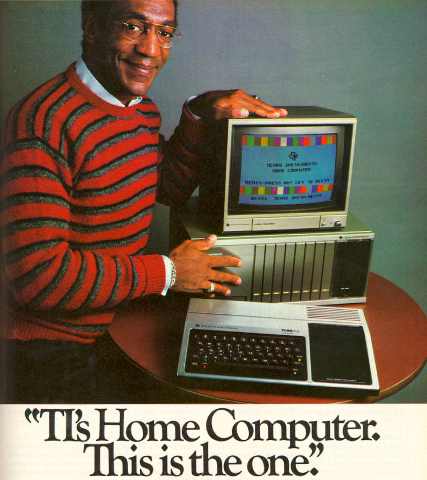
Posted on 03/17/2015 7:49:21 PM PDT by AlmaKing
Once upon a time, Radio Shack was saved from bankruptcy — in the 1960s. The British Tandy corporation, at that time a leather goods retailer, bought the company in a resulting merger called Tandy Radio Shack & Leather.
In 1977, Radio Shack's 3,000 stores started selling the TRS-80 (Tandy/Radio Shack, Z-80 microprocessor). Largely forgotten by the general public, the TRS-80 was, with Apple and Commodore's products, one of the pioneering personal computers of the late 1970s, and a key machine in the personal computer revolution. Byte magazine described the "1977 Trinity" of computers: Apple, Commodore and Tandy.
In 1981, the year of this catalog, the TRS-80 earned the nicknamed "Trash-80." Computer designer and writer Adam Osbourne described Tandy and Radio Shack as "the number-one microcomputer manufacturer."
In high school we had one model III with a floppy which could load and save programs and then send them over the tape interface and an amplifier to about 6 model I's. That was the first network I ever saw.
I wire wrapped boards with Z80s to make CPM machines. I believe the STD bus came along somewhere in there...
The TRS-80 made the Fortran IV language I learned in college obsolete.
The Fortran IV language made the Wang card reader I programmed in 9th grade look stone age. I programmed the equation for a slope on that Wang. Y=mx+b.
I really used that Wang, no bs.
http://www.oldcalculatormuseum.com/wang360.html
Then I went to the dark side and became a fracking oilman. What a fallen angel story.
“Still kicking myself in the ass for being a high schooler at the birth of the PC craze and not understanding the potential.”
I was in the first High School “Computers” class ever offered in Indiana, (not data processing, but Computers, at very small school) using Radio Shack Model 1’s. We got a Model II the second year.
I can still remember the School Board meeting with the teacher trying to convince them that “Personal Computers” were the way of the future, while the rep from Burroughs was trying to sell them the latest “Computer” that they had, that required insertion of paper data cards to “program”.
You’re not helping me get over it.

Back in the 1980s and early ‘90s, the hard drives on our computers at the radio station where I worked were cassette tapes that we erased and re-programmed several times a times a day (every six hours) for on air play to engage reel to reel tapes and carts (similar to 8 track tapes) to play music and commercials.

http://www.radioshackcatalogs.com/catalog_directory.html
They have the years between 1940 - 2003
Writing assembly language for the Motorola processor was simpler and much more straight forward I quit using BASIC altogether.
Wish I had one right now in my "play-box". I'd wear it out.
Use to wait impatiently for each new incoming copy of "80 Micro" magazine.
Pulled my copy of “TRS-80 Assembly Language Programming” (second printing 1979) from the bookshelf above the computer just now - learned to make a white dot move from one side of the screen to the other with machine language - exciting stuff in 1980....
UT was still using them in their electrical engineering program in 1989. They were outdated even then and the students called them Trash-80’s. There was a lab with about 30 of them and I remember one spring break when the place was full of hapless engineering students, clacking away on those little chiclet keys. The lack of a spring break was really brutal and so was the sadist of a professor who threw the assignment at us. I still remember him being dubbed the “smiling assassin” because of his tendency to cut students down with a big grin on his face. Ahh, those were the days.
I had a TI994A...hooked up to a black and white tv and a tape recorder.
Yep, as the modem speeds increased, the BBS lists would be updated with the baud rates supported. I think there are only a dozen or so dial-up bulletin boards remaining. I'm tempted to start one up, both out of nostalgia and as a response to the net neutrality crap.
The TI-99’s “expansion box” went for $$$, and that was before you started adding disk drives and so on. They did sort of forecast the desktop PC’s shape and footprint, though. Nice, well-built little computers. The final run was made more cheaply, though - the brushed metal was eliminated and the plastic moldings done in a putty color rather than black.
Ah, but do you remember the nirvana of a new USR 2400/5600 modem? Man, I thought it was smokin'.
I just have the basic model with the voice sythesizer & picked up quite a few game modules, etc. at thrift stores over the years. I haven’t tried to connect it to the flat screen.
Disclaimer: Opinions posted on Free Republic are those of the individual posters and do not necessarily represent the opinion of Free Republic or its management. All materials posted herein are protected by copyright law and the exemption for fair use of copyrighted works.